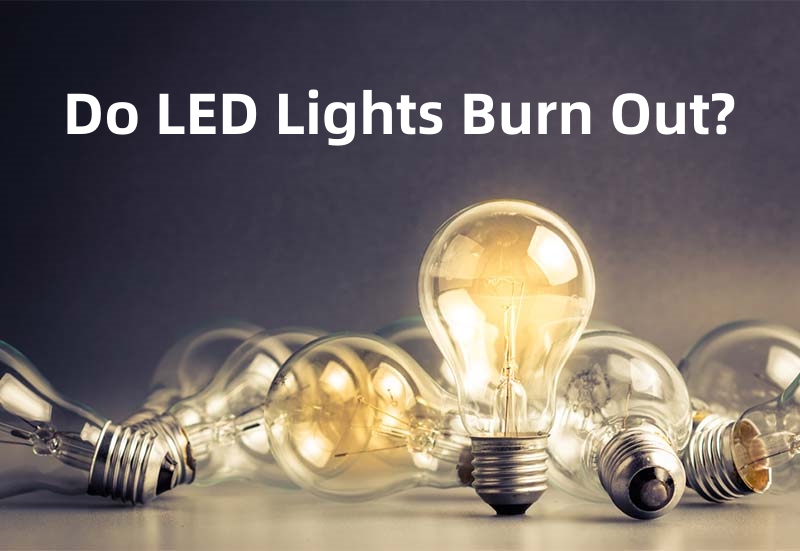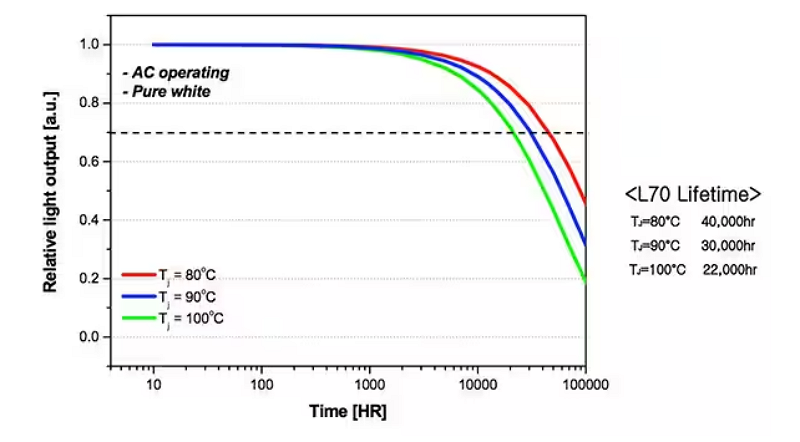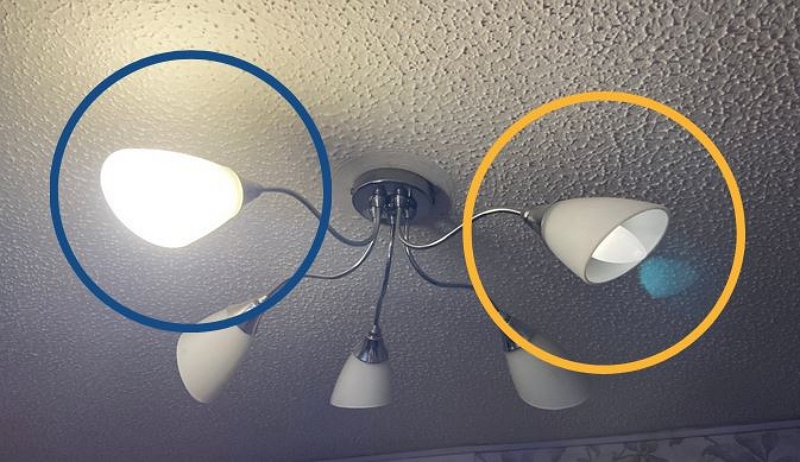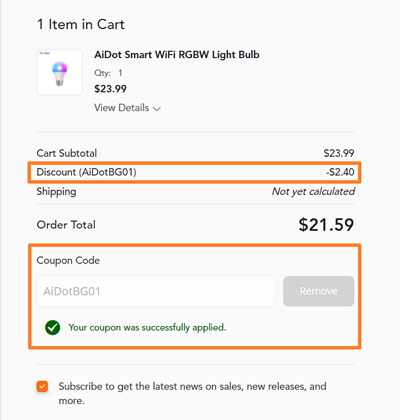LED lights are becoming a popular option for those seeking energy-efficient, long-term solutions. But before making a purchase, it's common to ask yourself, “Do LED lights burn out?†The good news is that with proper care and maintenance, LED lights can last for many years without problems.
Although, over time, their brightness will eventually fade away, LEDs don't typically burn out the way more traditional light sources do. In this blog post, we'll explain why LED lights don't burn out, outlining the key benefits of investing in these durable bulbs.


Part 1. Do LED Lights Burn Out?
Do LED lights burn out? This is one of the most frequently asked questions regarding LED lighting technology. The simple answer is no. Over time LED lights will eventually fade away, but they don't burn out. However, they typically last longer than traditional incandescent bulbs and other lighting options.
Incandescent bulbs use a filament that gradually evaporates over time, resulting in them having only a 1,000-hour lifespan on average before burning out completely. On the other hand, LED bulbs boast better longevity. They use semiconductors to convert electricity efficiently into visible light while minimizing heat and wear and tear, making them highly reliable.
One important factor in the lifespan of an LED light is the L70 standard, which is used to determine when an LED light has reached the end of its useful life. By international standards adopted by most certifying agencies, an LED light is said to have gone bad when its light output depreciates to 70% of the original/new rated output. This is referred to as the L70 measure or specification of the LED light. The longer the L70 number in hours, the better the life of the LED light. As long as it is working within its expected parameters, it can still be used for a certain period of time before being replaced.


Part 2. Do LED Lights Lose Brightness Over Time?
When you invest in LED lights for your home or business, the first thing you have in your mind is do LED lights burn out, and the last thing you want is for them to lose their brightness over time. However, this is a natural process known as lumen depreciation or lumen degradation. Over time, the amount of light produced by an LED light will decrease, eventually reaching a point where it is no longer as bright as it once was.
The rate of lumen depreciation can vary depending on factors such as the quality of the LED and its operating conditions. It can also happen due to gradual or catastrophic failure, which can be caused by various factors such as defects in the material, high current, or stress from thermal expansion.


Most manufacturers define the lifespan of an LED lamp as the time at which its output luminous flux drops below 70% of its initial value. The quality of the material used for manufacture directly impacts performance and lifetime; defects in the material may result in nonradiative decay leading to a reduction in output from the lamp.
The high current and thermal expansion stress could damage components within, causing unrecoverable breakdowns, ultimately compromising output and lifetime too! Epoxy encapsulation usually helps protect the die within, but when moisture and caustic chemicals seep-in due to inappropriate encasing techniques, shorts or voltage spikes are possible, making LEDs vulnerable to high-voltage electrostatic discharge resulting in complete failure!
Hence, proper care should be taken while selecting LED lamps to offer maximum luminescence even during prolonged usage!
Part 3. How Long Do LED Lights Last?
So, having learned about do LED lights burn out and do LED lights lose brightness over time. Now let's discuss how long do LED lights last.
| Type of Bulb | Average Lifespan |
| Incandescent | 1,000 hours |
| Halogen | 2,000 hours |
| Compact Fluorescent (CFL) | 10,000 hours |
| LED | 25,000 ~ 50,000+ hours |
One of the main advantages of LED lights is that they have a much longer lifespan than traditional incandescent and halogen bulbs. Whereas these older forms of lighting typically last only 1,000–2,000 hours before needing to be replaced, LED lights can last 25,000 to 50,000 hours or more—a remarkable difference!
This means that an LED light bulb can remain in use for years without being replaced—all while using significantly less energy than other bulbs. Such an advantage drastically reduces maintenance costs over time since there's no need to purchase new bulbs or install replacements continually.
Part 4. Common Problems with LED Lighting
Failure to Follow Current or Voltage Recommendations
LEDs require a specific current and voltage to function correctly, which means you need the right power supply (e.g., transformer) for your lights’ wattage rating. If you fail to deliver the right amount of current or voltage, your LED bulbs may not turn on at full brightness. To avoid these problems, make sure you use the recommended power supply for your LED bulbs and check that it matches the wattage rating of your lights before installing them.
Cheap or Low-Quality LEDs
Low-quality LEDs may initially appear cost-effective but often result in increased maintenance costs and decreased product life expectancy due to reduced light output. To guarantee reliable performance, consider products certified by reputable organizations such as those with Energy Star approval from the US Environmental Protection Agency (EPA).
LED Lights Flickering
Flickering is also one of the common problems with LED lighting that is often caused by voltage fluctuations or by using an incompatible dimmer switch. If you find that your LEDs are flickering, try using an LED-compatible dimmer switch if possible - this should solve the issue. Alternatively, check wiring connections to ensure they're tight and secure before purchasing a new switch.
Part 5. If You Are Looking for Perfect LED Light
If you are looking for the perfect LED light AiDot LED Flood Light Bulb is the best choice! This innovative lighting product is ideal for creating a variety of ambiance settings that fit your lifestyle. Here are some of the best features of the AiDot LED light bulb:


- 16 million colors and adjustable brightness to create a unique atmosphere based on different scenarios, such as game day or party night.
- Syncing to music to enjoy every beat to the fullest, whether it's dynamic or soft rhythm.
- Responsive voice control with Alexa and Google Assistant for hands-free operation.
- App control from anywhere to automate your smart home lighting setup and group control multiple bulbs with the AiDot app.Â
- Set schedules with customized lighting routines that turn on/off automatically daily to suit your lifestyle perfectly.
[Bonus Now]: Here is an exclusive coupon code only found in blog posts. Save it now (AiDotBG01) and get 10% off at our AiDot mall!


Conclusion
The common question consumers ask is, do LED lights burn out? The answer is no. Unlike traditional incandescent bulbs, LED lights will not burn out but gradually fade over time. They are highly efficient and can last tens of thousands of hours with proper care and quality selection. Additionally, LEDs offer an energy-saving and cost-effective solution to lighting needs in homes and businesses, making them an ideal long-term investment.
AiDot LED Flood Light Bulb provides all these great features at an affordable price so you can transform any room into an enjoyable environment while saving energy and money in the long run!
Solar Battery Pack refers to the overall unit formed by combining multiple solar battery monomers. It is one of the core components of the energy storage system, which is used to store the electric energy generated by solar power generation and supply electricity to electric equipment when needed.
Main effect:
Energy storage: Solar Battery Pack is used to store electricity generated by solar power, and store excess electricity to supply electricity when solar energy is unavailable or power demand exceeds solar energy generation.
Regulating power fluctuations: The output of solar panels is affected by factors such as solar radiation, causing fluctuations in power. The Solar Battery Pack smooths out power fluctuations and maintains steady power output.
Improve self-sufficiency: By storing solar power, Solar Battery Pack can increase the self-sufficiency of the solar system, that is, it can meet the power needs of electrical equipment and reduce dependence on the grid.
Differences from Solar Energy Storage System:
The Solar Battery Pack is an integral part of the Solar Energy Storage System. Solar Energy Storage System is a broader concept that includes all systems used to store solar energy or other energy, of which the Solar Battery Pack is a component.
The Solar Energy Storage System also includes other components such as inverters, charge, and discharge controllers, battery management systems, etc., which together form a complete energy storage system. The Solar Battery Pack is mainly responsible for the function of storing electrical energy. Therefore, Solar Energy Storage System covers more components and functions, and Solar Battery Pack is only one component of it.
off grid battery pack, solar power system battery bank, solar panel home battery bank, solar rechargeable power bank, solar battery pack for camping
Ningbo Autrends International Trade Co., Ltd. , https://www.china-energystorage.com